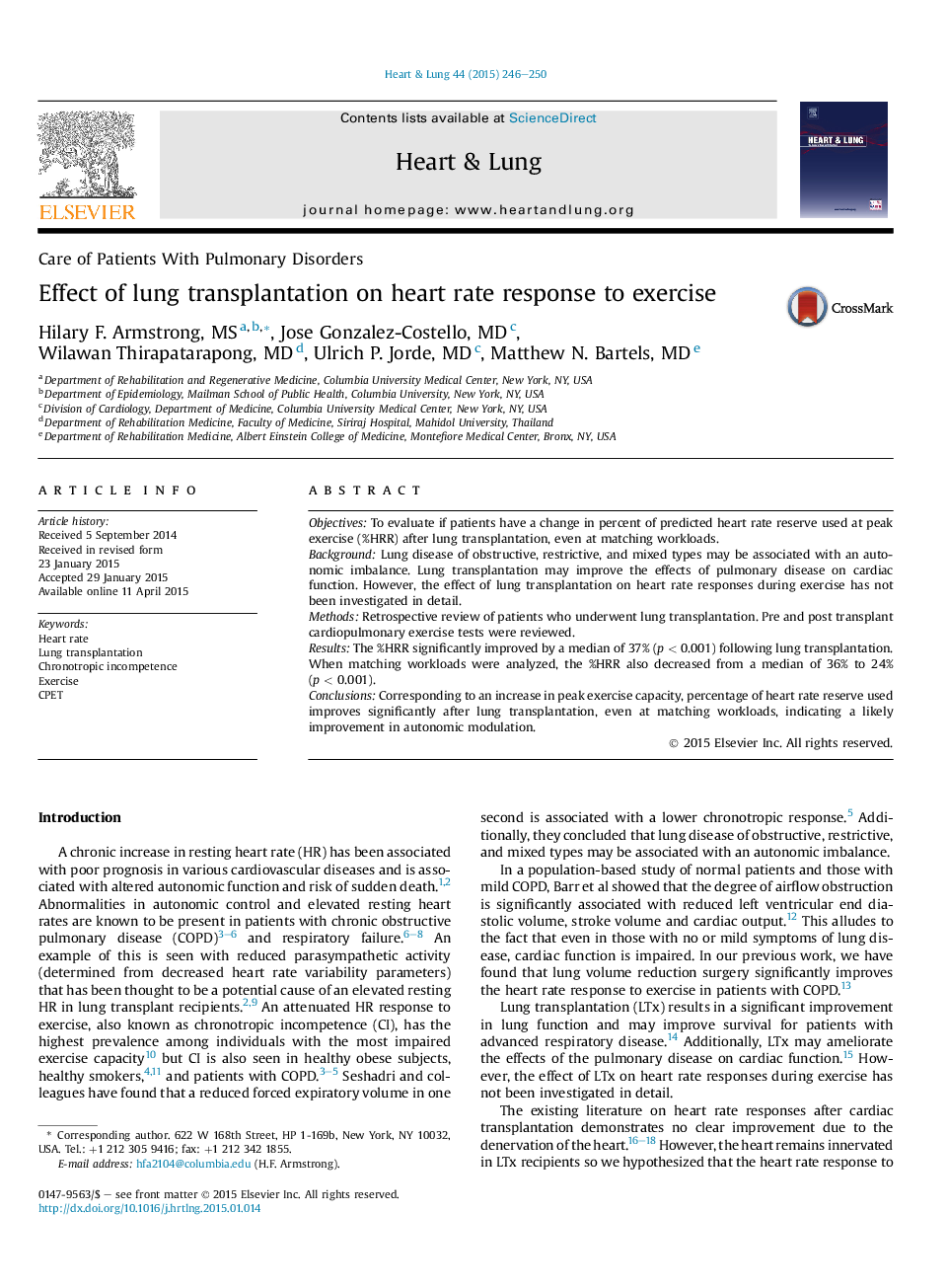| Article ID | Journal | Published Year | Pages | File Type |
|---|---|---|---|---|
| 2650395 | Heart & Lung: The Journal of Acute and Critical Care | 2015 | 5 Pages |
ObjectivesTo evaluate if patients have a change in percent of predicted heart rate reserve used at peak exercise (%HRR) after lung transplantation, even at matching workloads.BackgroundLung disease of obstructive, restrictive, and mixed types may be associated with an autonomic imbalance. Lung transplantation may improve the effects of pulmonary disease on cardiac function. However, the effect of lung transplantation on heart rate responses during exercise has not been investigated in detail.MethodsRetrospective review of patients who underwent lung transplantation. Pre and post transplant cardiopulmonary exercise tests were reviewed.ResultsThe %HRR significantly improved by a median of 37% (p < 0.001) following lung transplantation. When matching workloads were analyzed, the %HRR also decreased from a median of 36% to 24% (p < 0.001).ConclusionsCorresponding to an increase in peak exercise capacity, percentage of heart rate reserve used improves significantly after lung transplantation, even at matching workloads, indicating a likely improvement in autonomic modulation.
